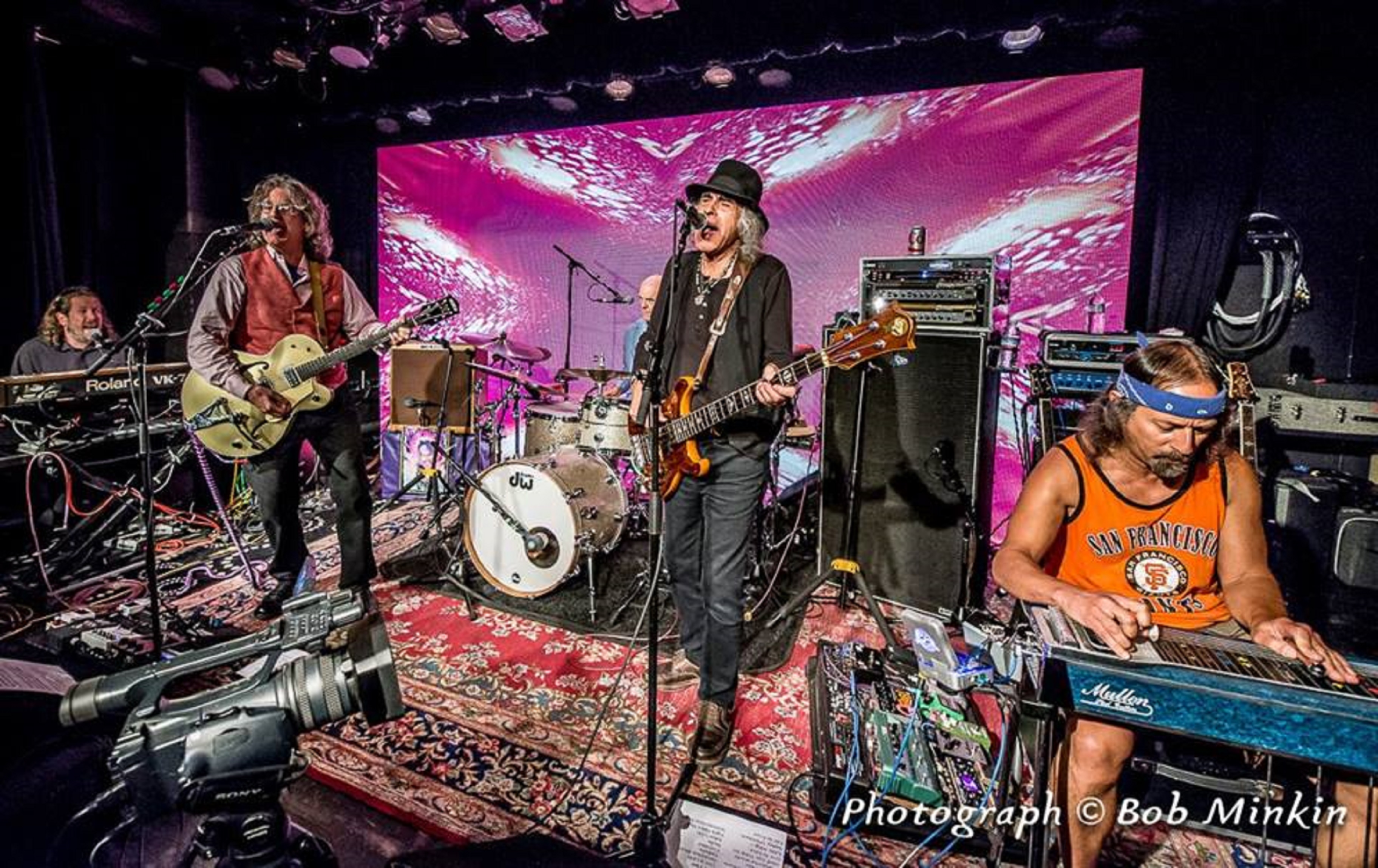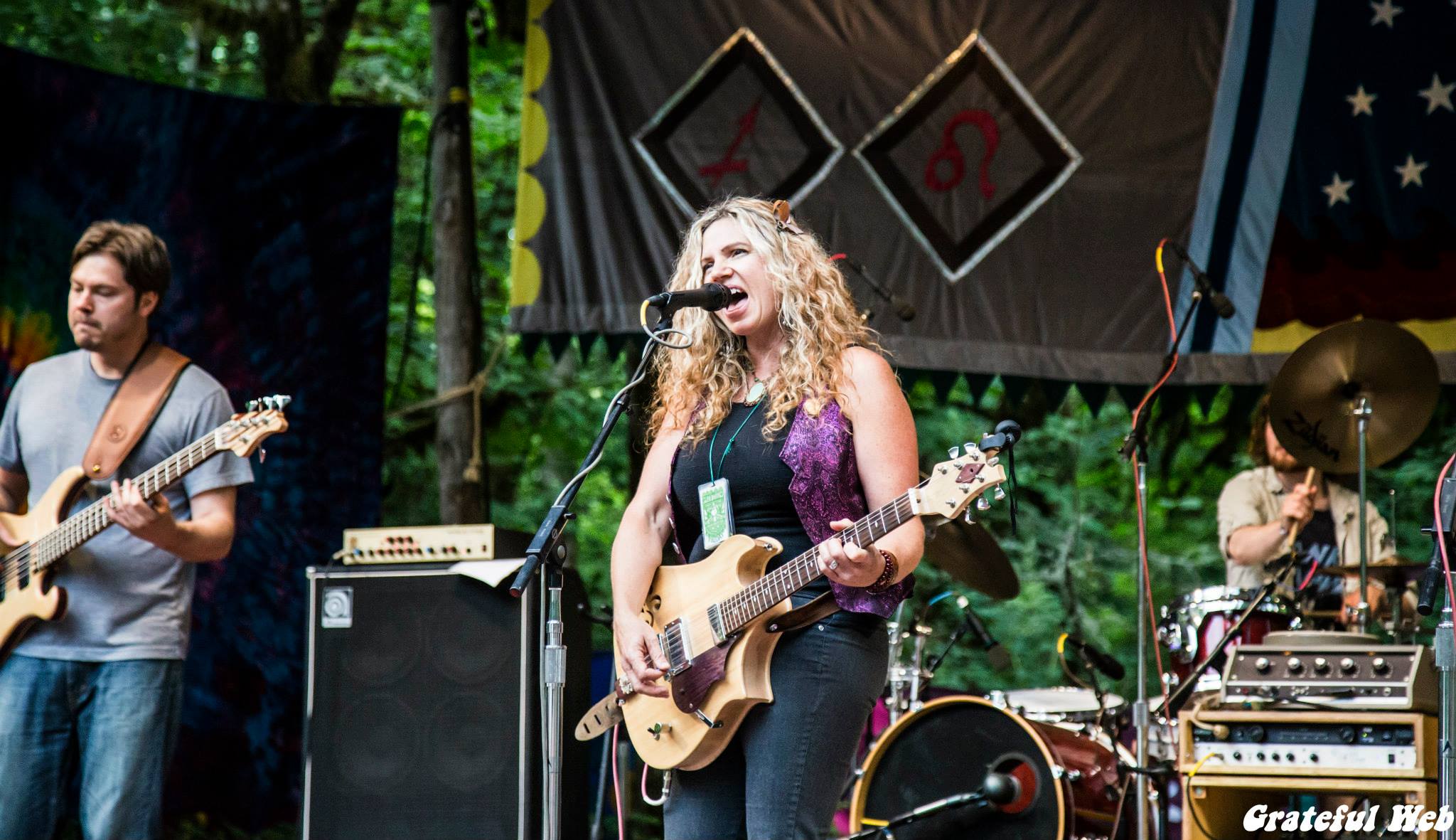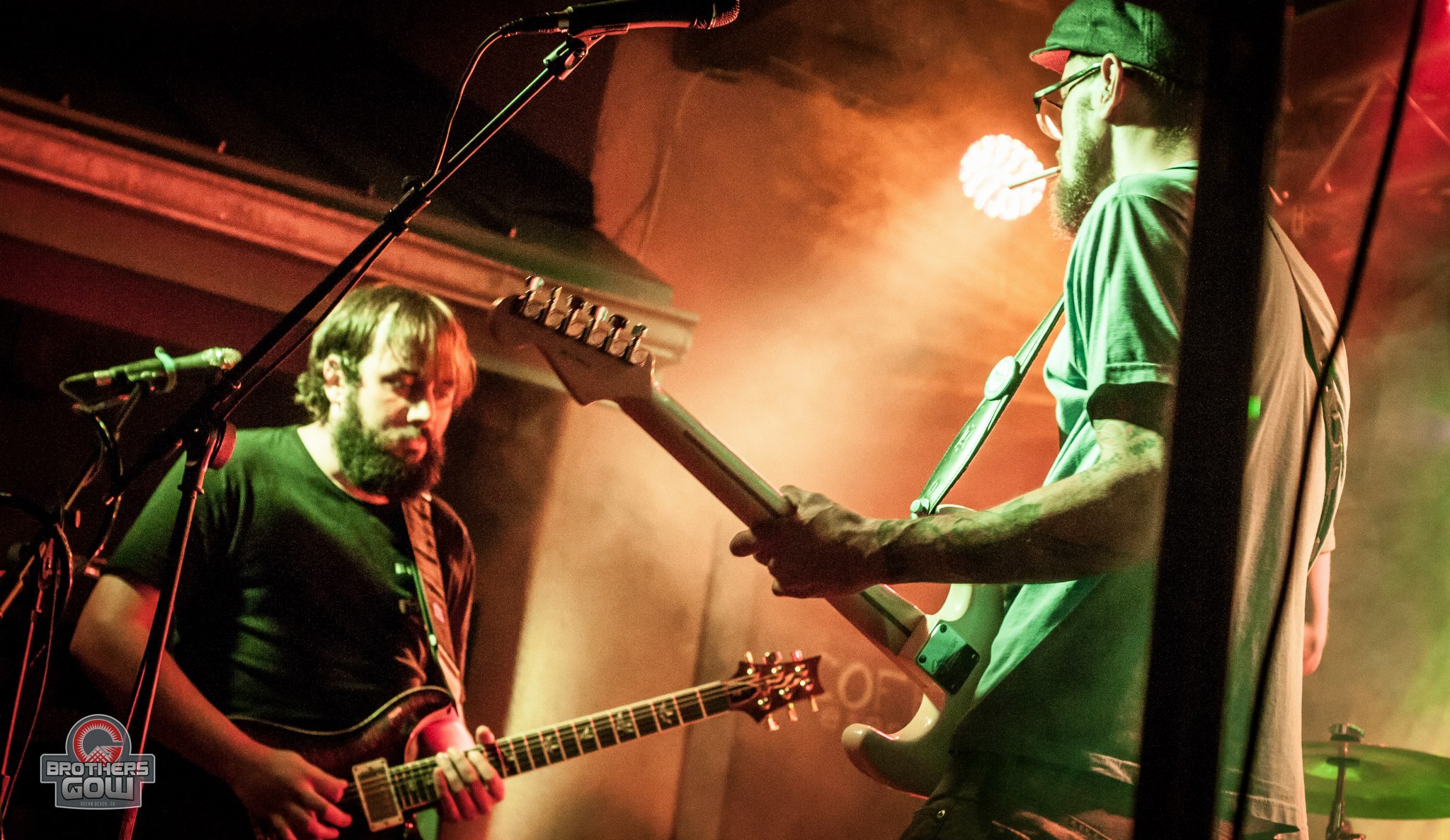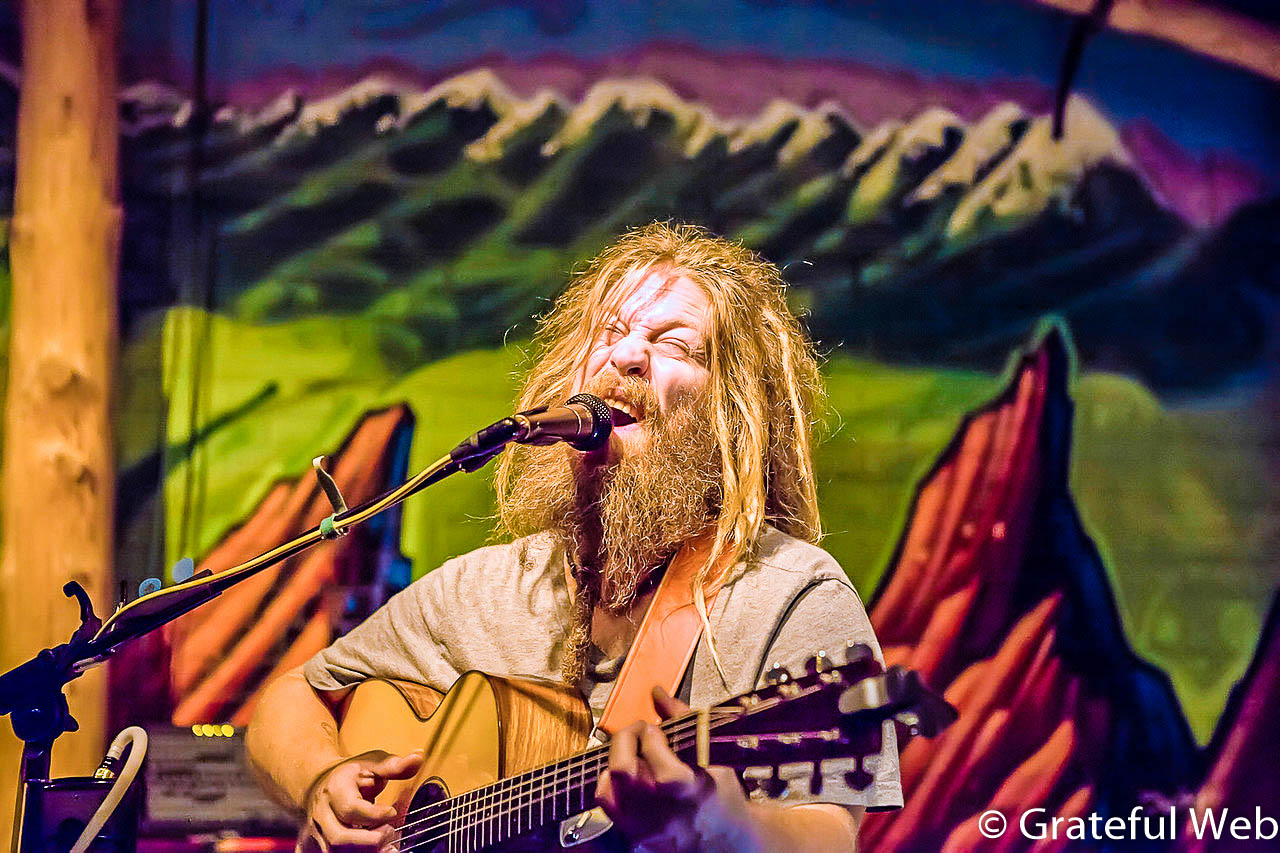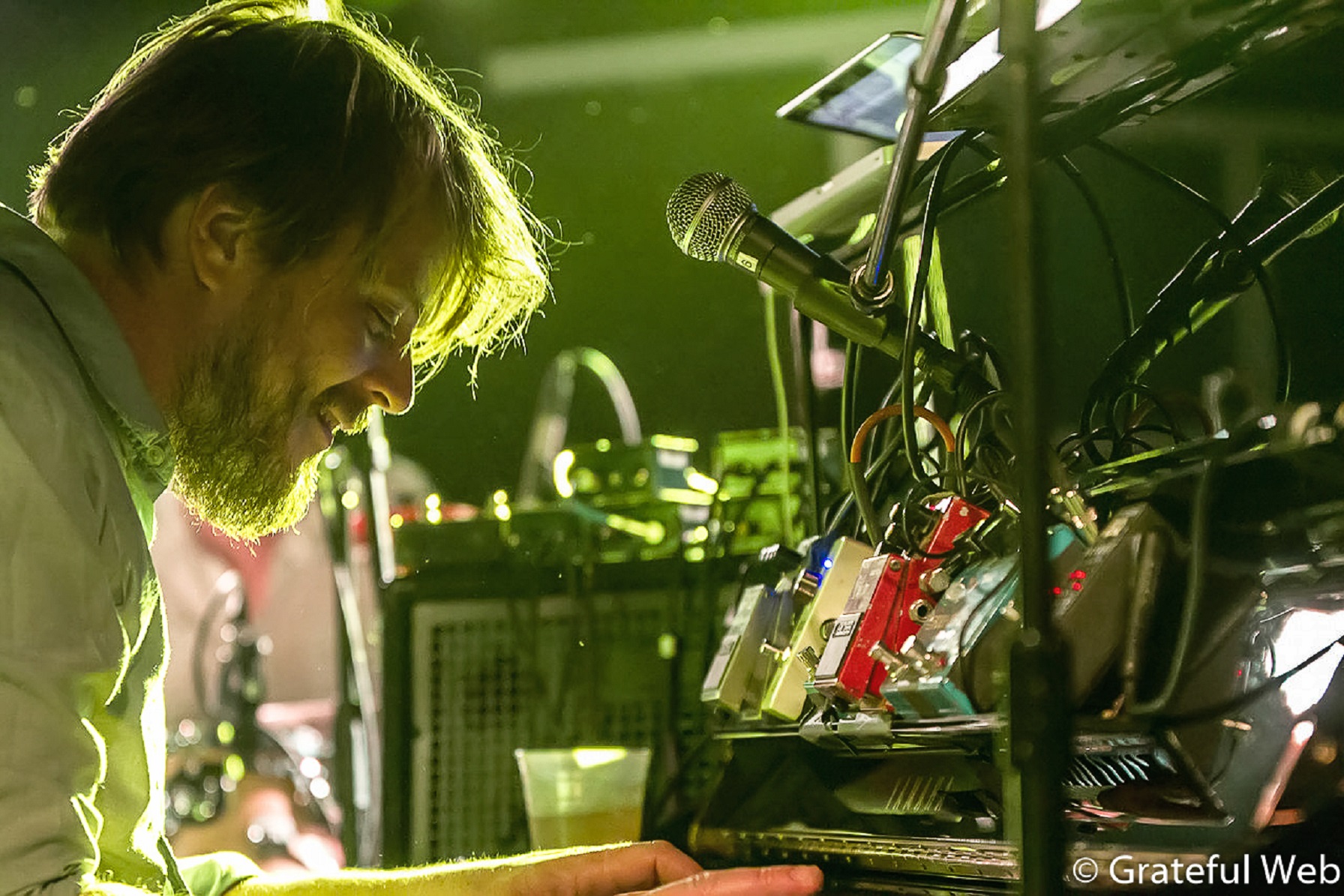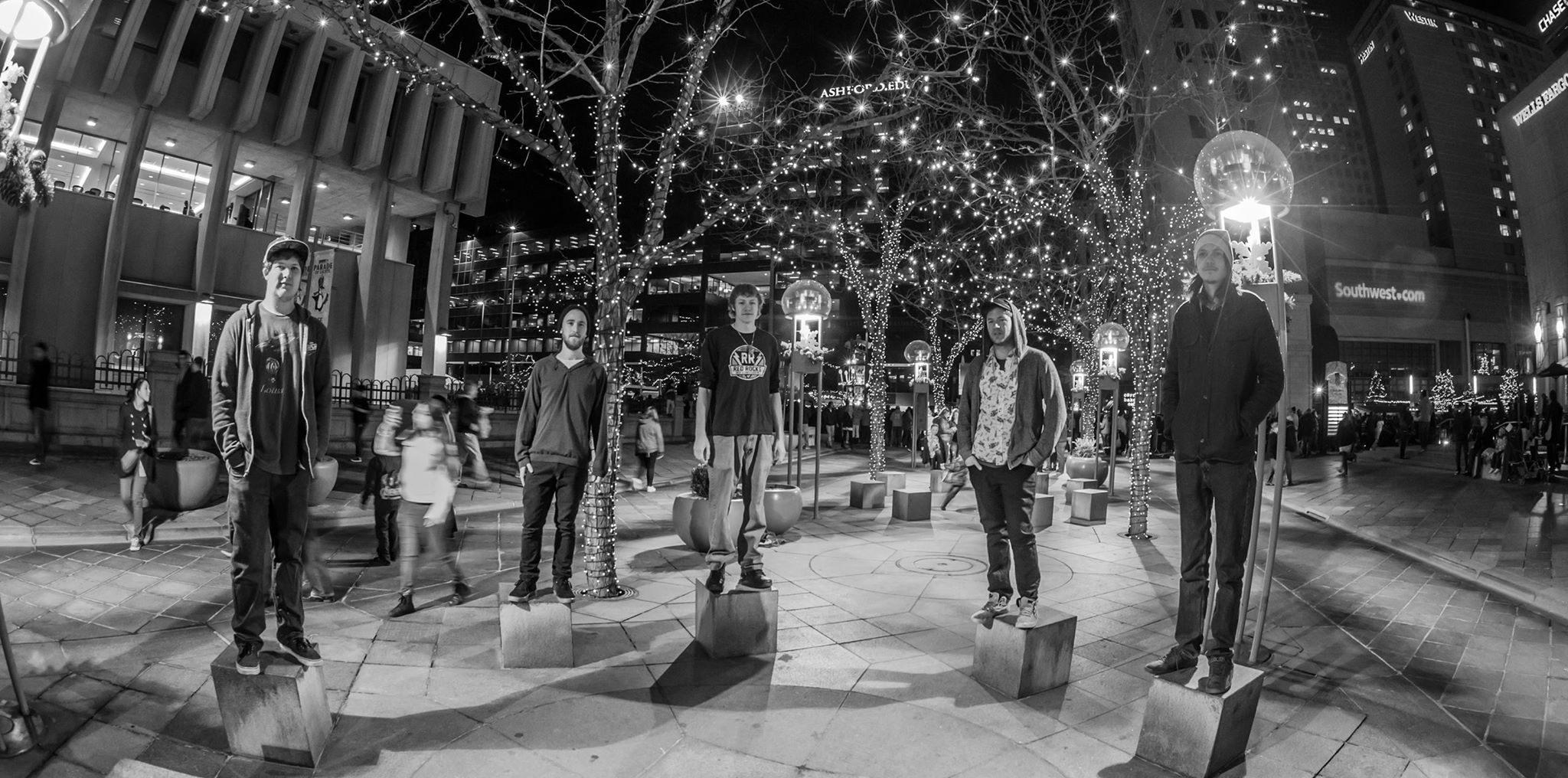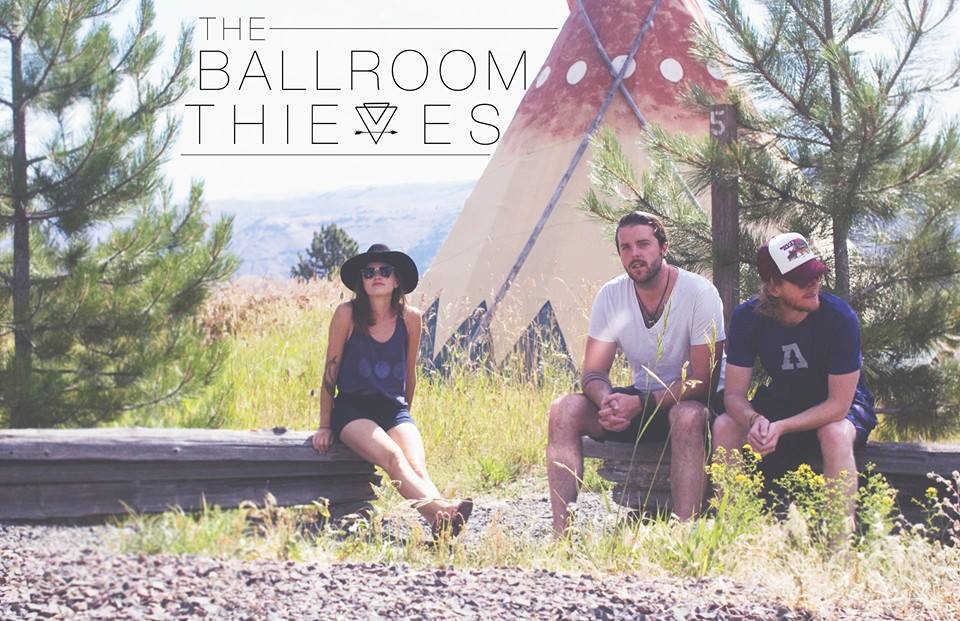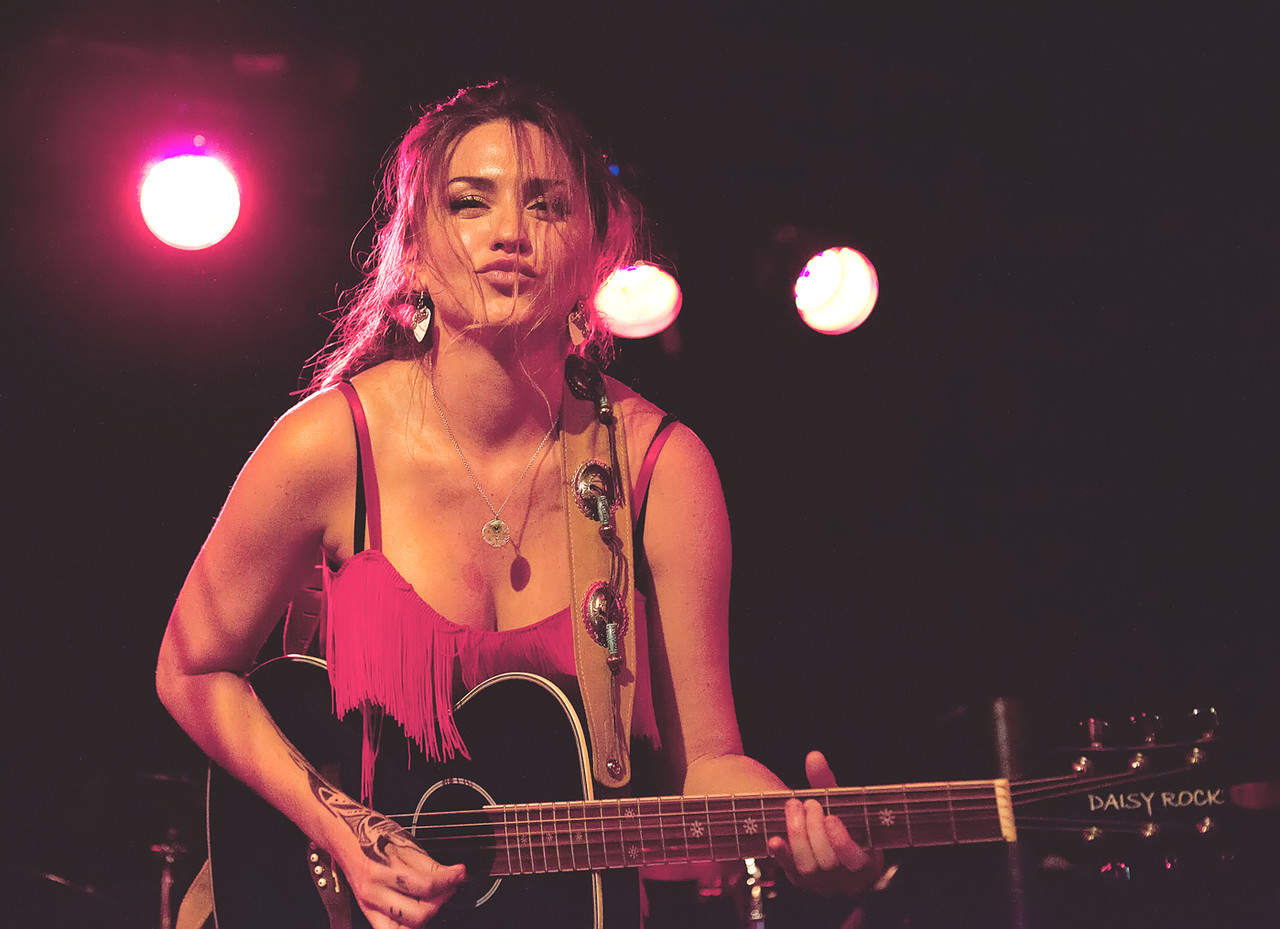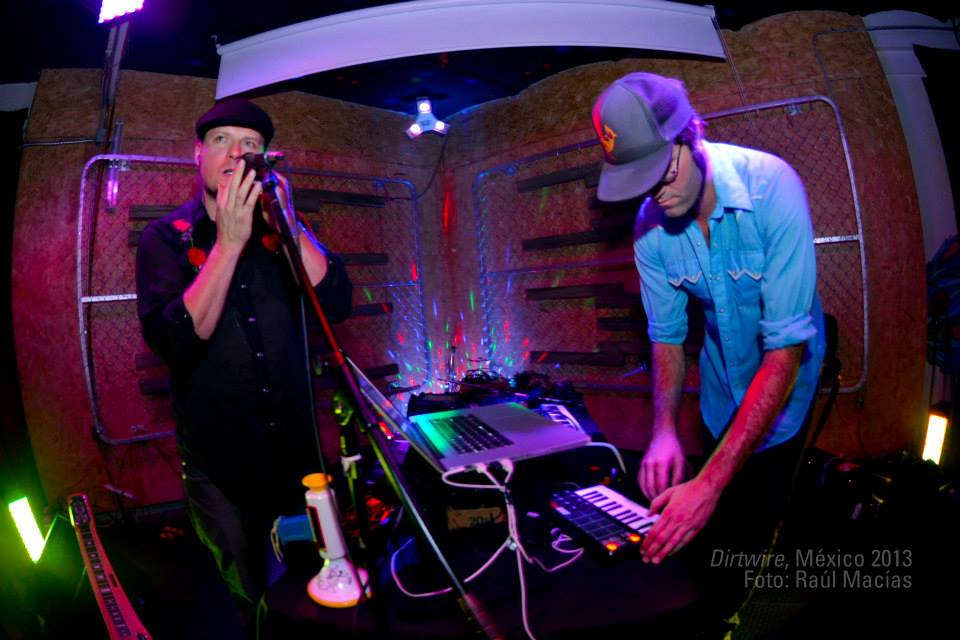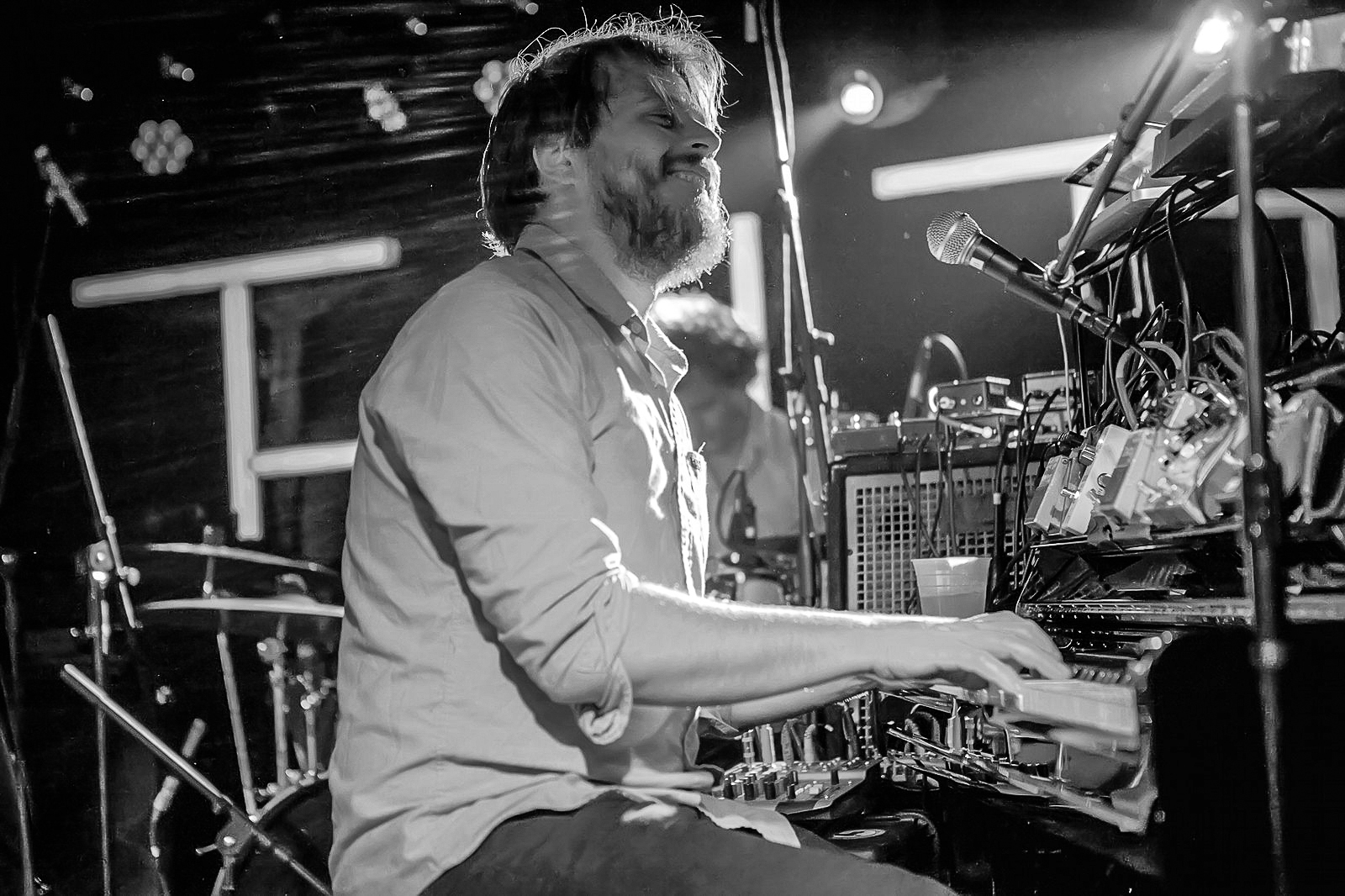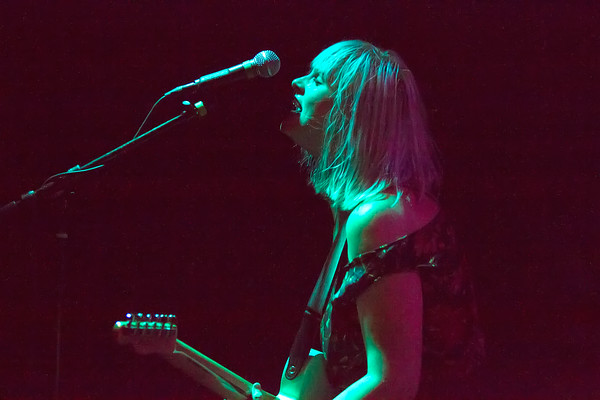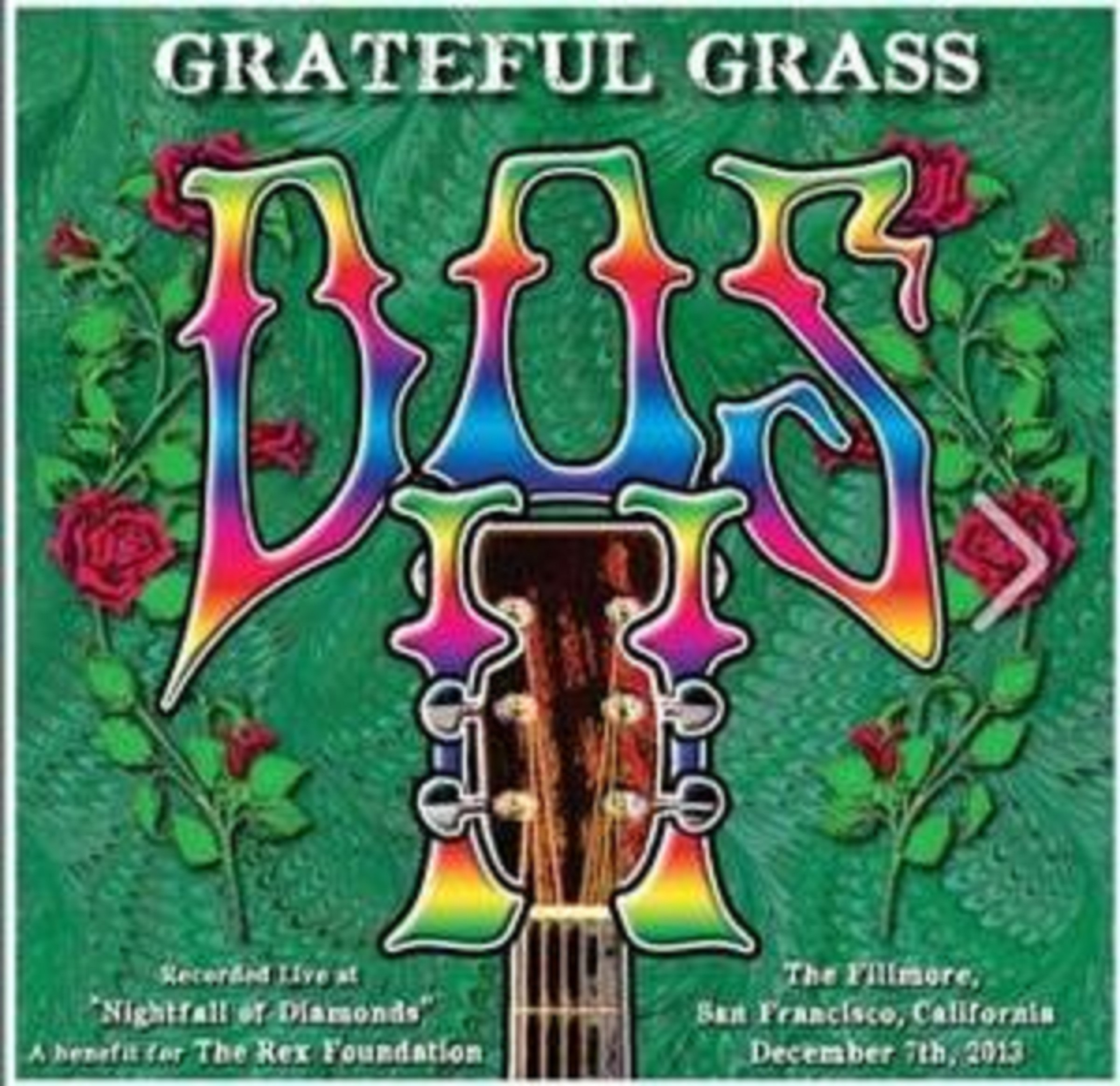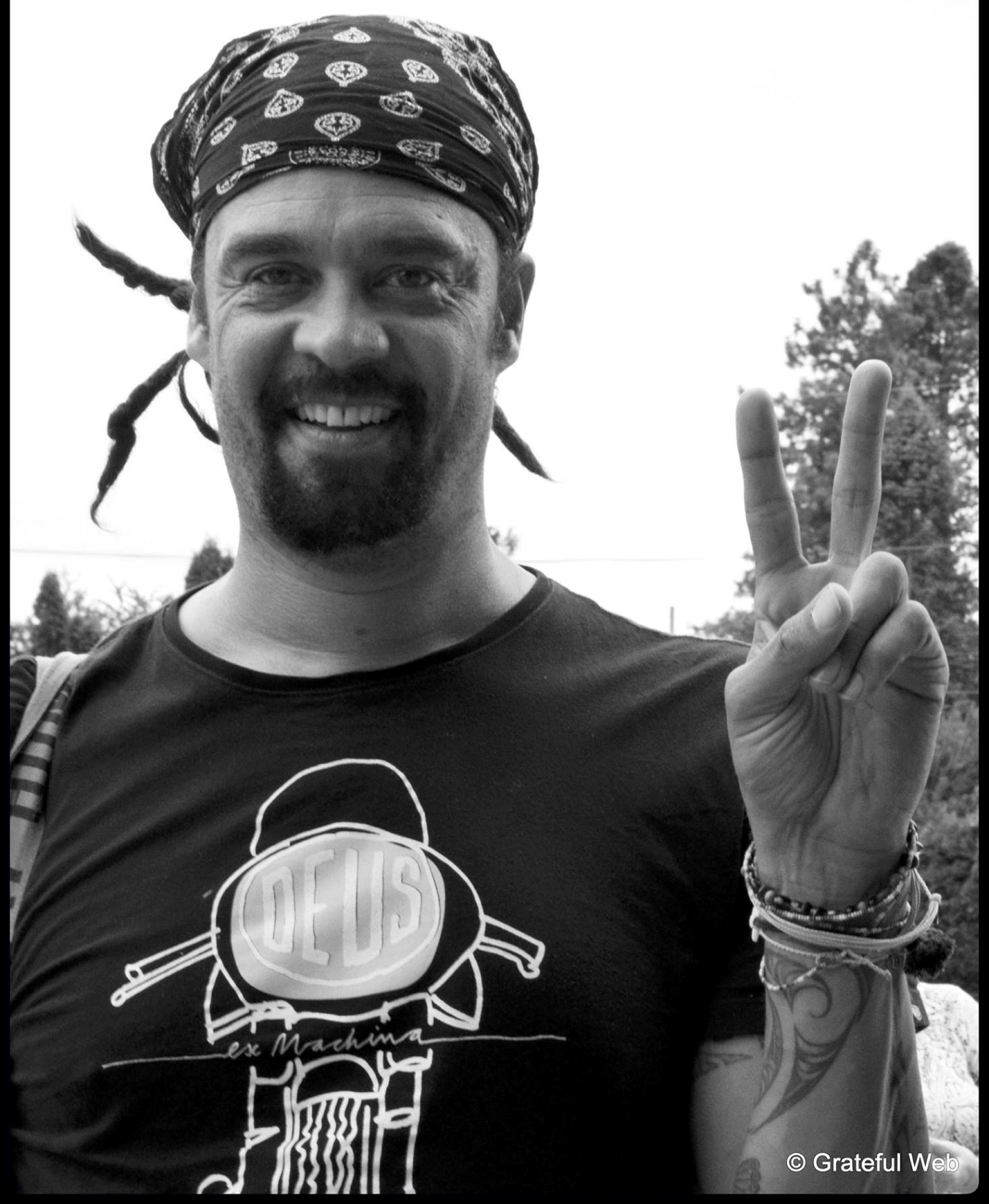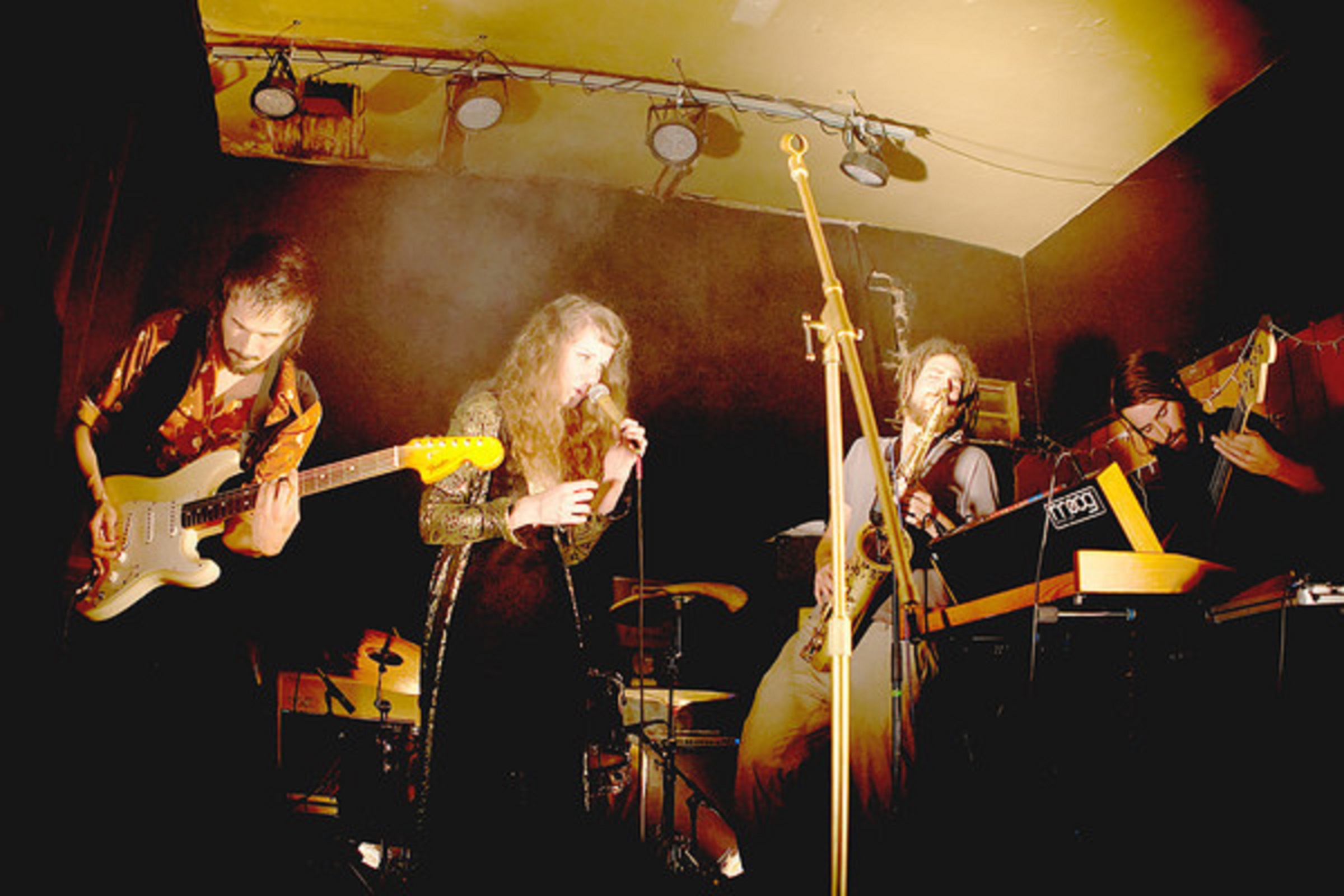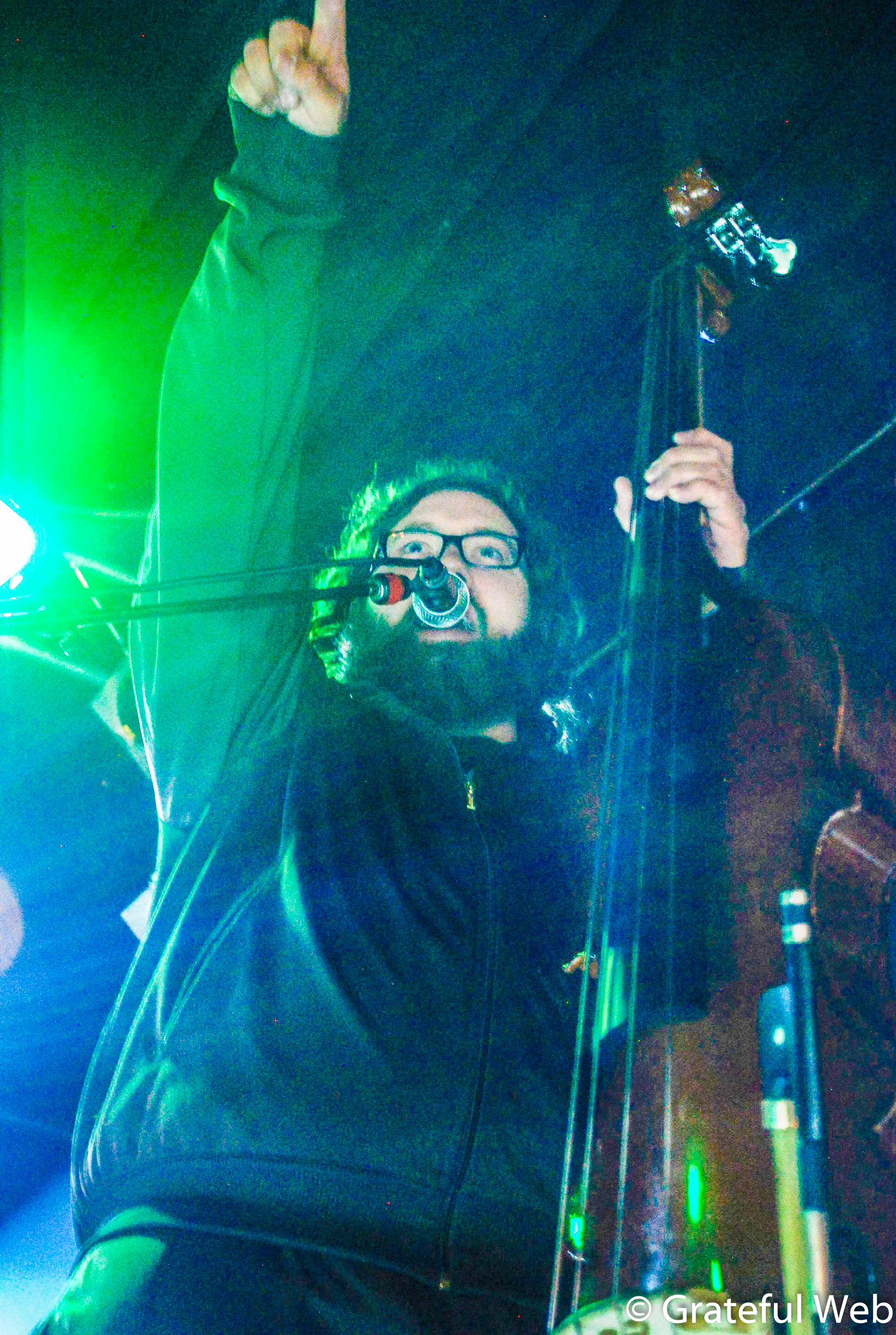In the midst of the “Fare Thee Well: Celebrating 50 Years of Grateful Dead”, Grateful Web talks to Roger McNamee of Moonalice. McNamee shares candidly Moonalice music, technology, their philosophy and vehement choice to live and play by their own credo -- perhaps similar to that of the Grateful Dead – to thrive – and have fun -- in today’s music industry.
GW: Hello Roger. Where are you at?
Roger: I’m in the Bay area. There’s a local band here that’s having their 50th anniversary reunion – that means it’s all hands on deck.
GW: You’re performing at Sweetwater today.
Roger: We had one last night and we have another tonight – a couple of sold out shows with Jason and his friends. [Jason Crosby & Friends] Last night, Stanley Mouse was there. There was an exhibit from the Haight Street Art Center of some of the original art behind the Grateful Dead iconography. So, we had the original paintings from Live Dead – the album cover. We had Rick Griffin’s original art for the 25th Anniversary logo and few other things like that. It was really fun. It was a just great celebration.
GW: The reunion is a separate event from the Sweetwater concert?
Roger: I’m talking about the Grateful Dead reunion in Santa Clara. Because of the Grateful Dead reunion, every show in the Bay area has an extra thing because there are 30 or 40 thousand people in from out of town. I want to say there are probably six or seven Grateful Dead theme shows tonight. There were only three or four last night – the pre-preshow stuff. We happen to be playing in Bobby Weir’s venue - and that’s a good thing.
GW: That’s sold out tonight as well.
Roger: Right, last night and tonight. It’s such a wonderful place. If you ever get out here, you have to visit it. It’s almost a perfect venue from a fans point of view. It’s not huge. Capacity is 300. Great food. Awesome audio. Everything sounds really good. Bobby and the team that put it together did an amazing job.
GW: That’s special for you guys to play there.
Roger: We play here a lot. It’s our home venue. Yes, it’s special because it’s one of our local places. In San Francisco, we play there and Slim’s the most. We also play at the Great American Music Hall, Terrapin Crossroads, the Ashkenaz, and others. There are a lot of venues in the Bay area and we get around to most of them.
GW: Well, you answer my first question about playing at Sweetwater.
Roger: Let me give you a little bit more. It’s very old school San Francisco. The people who work there are all our friends. We work with them to create unique experiences – and not just us. When Steve Kimock does his residency there, they work really hard to craft really special, really fun things in the old Chet Helms Family Dog style. You’ll have thematic nights. You’ll have mix art with music. You’ll mix books with music. Jason and I did a great show as the Doobie Decibel System where the drummer from Zero, Greg Anton, came down and talked about his book – he wrote a thriller about a musician called Face The Music. It’s a completely awesome book. So, we had him come down, talk about it and sign copies. It’s that kind of place.
GW: Right.
Roger: This is special time to be a musician in San Francisco. It happens by pure accident about a year ago a couple of our most successful jam bands had members who had children. The bands couldn’t tour. In one case, a key player who’s also in another band had a world tour. So, both ALO, the Animal Liberation Orchestra, and Teal Leaf Green were not active for a while. The result of which was that a whole bunch of great musicians were free agents. Stu Allen had left JGB. James Nash was around – from The Waybacks. They weren’t touring that much. You had Reed Mathis from Tea Leaf Green. You had Steve Adams and Lebo [Dan Lebowitz] from ALO who were just around a lot. You had Jason Crosby. So, what wound up happening is that this notion of somebody in France began to happen. Initially, it’s a way to do something on Monday and Tuesday nights when the place would otherwise be kind of quiet. But, it turned out to be so successful that now that whole thing can be any night of the week. We built this incredibly creative thing because it’s different players and different player’s music. Last night, I want to say we had Brian Rashap and Mother Hips was there. Steve Adams. On bass, you had Pete Sears, Brian, Steve, me, Jason…I’m trying to think who else plays bass. We had three drummers: John Molo, Jay Lane, Cochrane McMillan from Tea Leaf Green.
GW: Is this normal for all these guys to show up on a given night?
Roger: For these friends show, it’s completely normal. I would say every other week there is one of these friends shows now. It started at Sweetwater. A different thing happened at Terrapin Crossroads, at Phil’s place [Phil Lesh] where they used the bar. In the bar gig, initially it was Midnight North, which is Graham Lesh’s band. They got the thing started by bringing in a lot of people to sit in with them – everybody and their grandmother. Next thing you know, five nights a week in the bar there is a friends band – just a collection of cool people. These are not gigs that pay a huge amount. But, they pay and there’s a lot of visibility and a lot of audience. It’s actually a cool thing because Phil Lesh and Bob Weir are effectively paying for it. I want to say it started a year and a half ago. It really picked up momentum about six months ago. At Sweetwater, you’ll see Lebo, James Nash and Jason do some of these friends shows. Jason’s I think has been the most successful but it’s the same people at all of them so it doesn’t matter. You get all sorts of people. Shana Morrison was there last night as she usually is at the friends shows. She’ll do a couple of songs. Tonight, Reid Genauer from Assembly of Dust and Strange Folk will be there to do some songs. You never know who’s going to show. Sometime Weir shows up.
GW: These are not your typical shows.
Roger: That’s what these shows are. What’s cool is all these people get to play with each other. Now that it happens at least once a month and sometimes a couple of times a month, the repertoires are getting pretty tight. The San Francisco music scene is more fun now than anytime in the last 25 years that I’ve lived there. Which is not to say there hasn’t been great music throughout, but there is this creative thing of people getting together and taking music to where it’s never been before. I’m really lucky because we have Moonalice and the Doobie Decibel System. I personally get a lot of swings at the ball – I get to play this a lot of different ways. The music place is a tough place to be right now economically and this has really helped. It’s really helped a lot of people you know…pick up a paycheck while they would have been ordinarily more or less unemployed.
GW: This is good for Moonalice as well?
Roger: Unbelievably good. It’s a scene. If you will, we do the same thing. Participating in these gigs we sell a lot of tickets and it’s huge fun. Our players play with their friends.
GW: It’s fun for the fans.
Roger: It unbelievable. The audiences here are into it. If you go to Coachella, your expectations are to hear polish versions of songs on the radio. If you go to Sweetwater, you have no idea what you’re going to get. You can be sure of one thing. It’s not going to be the polish version on the radio. My point is San Francisco can be tough. It’s such a magnet for big bands that the local scene sometimes hasn’t been as generous to up and coming bands as some other cities. What’s weird and for whatever reasons, thanks to Bob Weir and Phil Lesh, there is this whole new scene that’s developed. I don’t know where it’s going to go or how long it’s going to last, but man it’s fun to be part of it.
GW: Moonalice initially started to create this 60’s San Francisco sound.
Roger: Yes, that’s T-Bone Burnett, the guy who did O Brother, Where Art Thou?. I think O Brother, Where Art Thou? was the largest selling soundtrack of its decade and maybe at one time, ever. It was hugely successful. T-Bone got the idea that he was going to produce a series of American Roots albums. If O Brother, Where Art Thou? was kind of Hill Country Bluegrass kind of stuff, he wanted to do every other categories of Americana music. He initiated three projects more or less in parallel. One was Raising Sand, with Alison Krauss and Robert Plant. Another one was for Elvis Costello and the third is Moonalice. In each case, his theory was, instead of starting with an existing band, he would have these artists put together a new band and start all over again. Of the three he did simultaneously, Raising Sand was the huge winner. It got the Grammy. It sold a zillion copies and had a successful tour. Elvis’s album disappeared without a trace. Our album disappeared without a trace. But, they’re brilliant albums. I’m sure Elvis is incredibly proud of his and we’re proud of ours. You just couldn’t compete with Raising Sand. It was too big. And, no worries. It was no problem. But for us, it was as a huge positive and it forced us to look around and leverage what was in our own local community – so Twitter, Facebook. We figured out all these ways to build an audience. In a sense, the genre of music we got hit by – San Francisco Psychedelic – is almost the perfect one to do that strategy. There are jam heads all around the world. If you’re into jam music, you’re always looking for new stuff. So, there’s the nourishment of putting things out on the web and letting people sample it for free. We all grew up as Deadheads. We always thought that the ethos of the Grateful Dead for the 70’s was when you signed up as a Deadhead, every once in a while you get a newsletter, periodically they send you a small LP, and then in ’76 you got this offer to buy these tickets when they came back out of retirement. That’s what we grew up with. That’s the ethos of music we really like. We’re organize our whole thing as that as the philosophy. There are going to be all these bands that are tributes to the music of Grateful Dead. I’m going to say we are much more attribute to the philosophy of the parking lot and all the things that made the Deadheads: art, posters, music, photography, crafts and all the stuff people want to make. So, Moonalice is kind of an excuse for a lot of creative people to do their thing. We give them a lot of room. We don’t charge them so they can really build a business. We don’t police them except to say, look don’t embarrass us.
GW: Moonalice is techy – broadcasting concerts in HD.
Roger: Check out last night's show! [http://www.moonalice.com/videoplayer/2015-06-25/25127] That had a camera position where you can really see the light show. I was watching a bit of it on the way home and it looked great. We now have an LED wall and damn it looks good.
GW: I saw something like that in one of your videos. You guys try to stay on top of the technical area?
Roger: It’s not that we try to stay technical. That’s not the right way to think about it. The right way to think about it is that we live in the world of technology. Our community is loaded with people that know that.
GW: You embrace technology.
Roger: I didn’t even have to do that. If you go back to the beginning of the computer industry, people who were born in the mid 50’s and grew up in the ‘60s who listened to our kind of music started it. There was a reporter who wrote a great book, What the Dormouse Said. It’s about the interrelationships of essentially psychedelics – both the drugs and music…and the technology industry. To say that the two have a lot in common is a gross understatement. The personal computer industry was started by hippies. We don’t have to do anything other than be receptive. Steve Jobs famously said never trust anybody who hasn’t taken acid. That was the philosophy of the personal computer when it started. My point is we are surrounded by people our age who know a shitload about technology. They’ll go, “hey, I got a this really cool idea. Do you want to try it?” Unlike other bands, the Grateful Dead’s automatic reflex is to say ‘yes’. Well, we thought that’s a good idea – how about if we just say yes. Do you know how our videos got started? We didn’t have a plan at all. A drum tech, a guy name Glenn Evans, who is by the way the drummer in the one of the most successful metal band (Nuclear Assault) in the world is now doing a global stadium tour. He hurt his back so he wasn’t able to play for a few years and he was drum teching for us. He bought a video camera and asked to video our show. Hell, that’s sounds like a great idea. He put a camera behind a soundboard. A fan said he’ll give him five bucks for a copy of the video file. Really?
GW: Of the video?
Roger: Of the video. He was making DVDs and selling them for five or ten bucks. He got a second camera, doing two and mixing them to make the video look better. That worked out pretty well. Then, he got a third camera and suddenly the time it took him to mix was a month for every show. It wouldn’t have been a problem except we were playing 10 or 15 shows every month. After one month, he’s 14 shows behind and after two months he’s 28 shows behind.
GW: When you say mixing, is he mixing in sound with video?
Roger: It’s like a three track video file if he wants to take the best angle to make one composite. He was taking three versions with different angles and mixing them into one – cutting and pasting. He was doing what a movie editor would do. Then, somebody said why don’t you just do a live mix. We’re all going, “what’s that?” I didn’t know anything about video. Instead of mixing afterwards, you mix it while the show is going on. You have a director. We’re not going to have cameras guys; we’re going to put all cameras on mic stands. And, Glenn is going to do a live mix while the show is going on. He knows the music and he knows where to make the cuts. That’s how we started. We did a first live one and we did it on a service called Live Street when it was first starting out. They had this deal up to 50 simultaneous viewers – it was free. In the first show, we hit 50 viewers sometimes in the first set. Glenn gets a phone call from Live Street going “dude, we need a credit card or we gotta shut you off.” We had to give him a credit card at the set break. We said we got something here. So, we borrowed all the equipment and the guy we borrowed it from let us keep it for a couple of weeks. We were doing all that with WiFi in the hall. However, hardly in music hall had enough bandwidth to do video. What can we do? We can use cell phones. We put together six cell phones for enough bandwidth. But, you know how bad it is if you only have one bar of bandwidth. No matter how many phones you have, if you only have one bar then you only have one bar. You can have one hundred phones and not get data. This was an attempt to do 480p. The network wasn’t good enough – 3G phones.
GW: Are you guys musicians or engineers? [laughing]
Roger: Hang on, the musicians weren’t doing this. Guys were joining our crew were doing it.
GW: Ok.
Roger: You follow me. They were all musicians. They weren’t in Moonalice but they became part of our crew. Long story short, what happened was in the beginning you can only broadcast to a pc. Then a bunch of things happened. Imagine each show was for hours. We were doing a hundred shows a year – that’s 400 hours of broadcast time. Hardly anyone on earth does 400 hours – baseball teams do but that’s pretty much it. 400 hours was a ridiculous amount of broadcast. For some reason, our service provider guy took away our bandwidth. We had to find a new guy. We stumbled upon some guys who had a new dish that was only two feet across and can fit in a suitcase. That changed everything. Suddenly, you can take all this stuff on the road. Since these were new, we essentially became their tester and we got a great deal. Nobody was doing that many hours in that many places for testing their network. We were providing them with valuable research data.
GW: You need a lot space for all that data?
Roger: It’s practically free – this is Silicon Valley. They give this stuff away. In fact, we just got a new deal with Akamai for storage – and it’ll cut our storage cost in half. You’re right; we have tens of terabytes of video. Now, we broadcast in 1080p so the files are huge. Looking at them in 16” display is great. We’ve done about 500 videos and I think 350 are in HD – that might be high.
GW: I saw a YouTube video of a businessman, investor, Yale grad, venture capitalist name Roger McNamee discussing HTML 5 compatibility. Is that you?
Roger: Yep.
GW: I thought I’d ask. I don’t believe everything I see on the Internet.
Roger: Yeah, I’ve been playing music professionally my whole life. I was in a band in college that should have been successful. One of the guys quit and we didn’t realize we were just supposed to find a new keyboard player. We let the band breakup. I had huge student loans and nobody to support me. I had to get a real job. Through a series of accidents, I wound up having a successful day job career.
Meanwhile, I’m playing 1500 shows in the last 20 years. I’m not doing much business stuff anymore. I’m pretty much a full time musician now. I did the tech thing for a long time and I’ve been gradually freeing my time up over the last four years. Now, it’s 125 shows a year. I don’t have an office anymore and I don’t’ worry about that.
GW: Moonalice's initial vision to create this 60’s San Francisco sound, is that where you guys are still headed?
Roger: Listen to last night show and tell me. Music is in the ears of the listener. Our goal is to play music that people like us likes to listen to. If you listen to last night’s set, you’ll hear it falls into a certain style you would find that is totally recognizable.
GW: I was listening to a few tracks: “Blink of an Eye”, “Dance Inside the Lightning”, “Kick it Open”, etc. Moonalice sounded great in my car and I’m sure you’d sound great live.
Roger: Some of those were from a long time ago. Do me a favor? Listen to some stuff from 2014 and 2015. In fairness, we have evolved a lot. I’ll give you some covers of the songs you would know from what we played last night. We open the show with the only Grateful Dead song we played last night -- “Might as Well”. Then, we played two songs together from the Derek and The Dominos Layla album – “I Looked Away”. We did “Across the Universe” from the Beatles. “Eight Miles High” by the Byrds. Those were the covers from last night. Like the Dead, we do a lot of rockabilly songs and a few country songs. We’ll do “Twenty Flight Rock” by Eddie Cochran and “Summertime Blues”. We do “Can’t Buy Me Love” from the Beatles and “Revolution”. We don’t play a huge numbers of covers but we play a lot in each show.
GW: How do you choose your covers?
Roger: It sort of when somebody wants to sing it – that’s usually the way it starts. Pete really wanted to do “Across the Universe”. I wanted to do “Stuck Inside of Mobile with The Memphis Blues Again” and “Revolution”. The first time you try it and if it goes well, people get excited about it. If it doesn’t go well, you’ll never hear from it again. What’s funny out here is that even though we’re all Deadheads, we know practically every Dead song, we’ve all played with members of the Dead – John was the drummer for Phil for years, Barry played in Phil’s band, Pete played with Jerry, we’ve all played with Bob Weir and Mickey Hart because our old band used to back those guys up when they did political benefits.
So, the Bay area it’s the Grateful Dead all the time. We typically don’t play that many Dead songs simply because everybody else does. But, it’s not that we can’t. [laughing] This year will be our fourth straight year of playing Grateful Dead night at the San Francisco Giant’s ball park. For that, we play all Grateful Dead’s.
GW: Of course. I know you guys tour quite a bit.
Roger: 90 shows a year.
GW: Do you find time to write?
Roger: It turns out that’s really easy. We typically don’t write together. Somebody writes the core of the song, brings it to the band and we finish it together. Pete Sears used to write one song a year and now he writes one a month. Pete’s songwriting has blossomed – it’s amazing. My songwriting has gotten a ton better and prolific. Barry has been writing a lot of instrumentals. Next week, we’re actually going to get together for a couple of days to work on new songs. John’s got some drum beats to build songs on top of. That has really worked successfully for us. The reason I wanted you to listen to our old stuff is because our repertoire today is mostly songs we've written in the last 12-18 months. We still play songs from the old days. Last night, we played “Tell Me It’s Ok” and “Fair to Even Odds” which we played from the beginning of the band.
Last night, we’ve played “Tunnel 64” which we’ve only been playing for three weeks [https://www.youtube.com/watch?v=M1mKYoq9FC8]. “Summer Rain” is a year old [https://www.youtube.com/watch?v=2iSfYovB-p8]. “High Five” [https://www.youtube.com/watch?v=dtQSDmRumlI] and “Summer Rain” we just recorded for the first time this year.
GW: “It’s 4:20 Somewhere”, that’s a new song.
Roger: That’s a team songwriting thing. I have a portion of it. We have 4.6 million downloads there. We save it for special occasions. There are certain situations that cry out for it and that’s when we play it. [https://www.youtube.com/watch?v=iH2tX0Q3U0o]
GW: Why do you think “It’s 4:20 Somewhere” resonates with fans – 5 million downloads?
Roger: With all things in culture, timing really matters. You can see attitude towards Canada has really changed dramatically. You live in Denver – you can see it in your own life. When we put that song out roughly five years ago, we were right in front of all that and we just happen to hit the timing exactly right. Facebook was exploding. Because we use Facebook as our primary distribution mechanism, that was a piece of dumb luck you can never reproduce. You can never do that on Facebook again. It’s a band nobody has ever heard of. Now, people’s Facebook habits have settled. When we did it, people's habits had not settled and we got a lot of benefit from that.
GW: Moonalice as a group has a favorite song they like to play?
Roger: It’s a great question. It would be interesting to see what people said. I think everybody has a different view and it does evolve. Right now, the one that is growing the most where it’s getting most interesting is an instrumental that Barry wrote called “High Five”. We just recorded it and that album will come out, knock on wood, in a few months.
GW: Is the song available out there?
Roger: Yes, it’s available in live recordings. [https://www.youtube.com/watch?v=dtQSDmRumlI] You can listen to last night’s version of it. There is no individual crop version of it yet because we haven’t put the song out. We play it every third night. We played it last night. We played it in Oregon last week. I think in terms of long term durability and probably the fan favorite is “Tell Me It’s Ok”, which is the song that finished the show last night. [https://www.youtube.com/watch?v=ishmsW23dTA] If you said we had a radio show and we can only play one song, that song would be a song of peace called “Joker’s Lie”.
GW: Thanks for the tip.
Roger: It just keeps evolving. People our age, if they’re really lucky, are still in the heritage act they were in when they were 20 or 30 years old. In which case, they’re playing 30 shows a year making a ton of money for playing the same 20 songs in the same order every night. That’s the heritage act – you’re playing the hits.
That’s the best gig out there. My favorite example is when we’re playing a gig in New York. Jay Jay French, founder of Twisted Sister, comes up to us and says man I love what you guys are doing. I thought dude, you’re Jay Jay French, what do you mean you love what we’re doing? He goes look I love what I’m doing. I love Twisted Sister. It’s really awesome. But, we play the same 17 songs for four years over the last 20 years. That’s what people want. He said I would love to be in a band that you can play whatever the hell you feel like. We played in Oregon four consecutive nights and we didn’t repeat one song. There’s a cost to doing that and there’s a benefit – the benefit is spiritual. If you’re not quite so lucky, you’re probably playing in a tribute band. In which case, you’re playing the same 40 songs in the same order night after night but they’re someone else’s songs.
GW: Going back to Jay Jay French’s scenario, it’s what the fans want.
Roger: It’s what the fans want. Twisted Sister is smart. They give the fans what they want. Can you imagine going to see Paul McCartney and not hearing any Beatles song? That would suck.
GW: Yeah, I need to hear “Yesterday”.
Roger: I like to hear something better than that – like Sgt Pepper or We Can Work It Out. The point that Jay Jay was making was that if you’re really successful in music, it does become a business. As a business, you have to give the customer what they want. Your creative license is greatly reduced. And, that’s not a bad thing. Let me give you an example on the other side of the equation. Bruce Hornsby. Bruce has always insisted on playing new stuff. He now plays in places smaller than Moonalice because people want to hear the hits. And, he doesn’t play them. The point is he’s willing to accept that. That is his choice.
GW: How does Moonalice reconcile all this – trying to go about business, making a living and playing what you want to play?
Roger: I guess what I would say is at heart – we’re hippies. We have created a collective in Moonalice where we have chosen a path of maximum creativity. Like all bands, we had a period of invest. Financially it’s a struggle. But, it’s ok. We’re in it for a different set of things. That question is a really good question for a lot of bands but it doesn’t quite match our situation. We’re in it for different reasons. Whether you like those reasons or not, we’ve made those choices the same way Bruce Hornsby has and other people have. There were other paths available to us that I think would have been more financially successful than the one we chose. But, it might have not been as spiritually fulfilling and for sure it wouldn’t have produced the creative thing that this has. I mean last night's poster was 841 – 841 posters in 8 years. That’s a lot. Stanley Mouse was at the show last night signing posters for people. Who does that? Not enough people is the answer.
GW: The posters are amazing.
Roger: When we started out, we had these guys that wanted to do posters. We’re going to do a different deal than everyone else. Poster art has been made by bands and promoters forever. We said look we’re going to do a different deal. We’re not going to take your copyright which everyone else does. The financial deal with working with Moonalice is not better than others. But, there are two huge advantageous. One is there's way more work with us. And two, we don’t take the copyright. That is a big deal. If ever somebody wants to license it for something, than the artists get paid. We created this really friendly, very hippie model thing with the artist to the point where they got so good at it that somebody has contributed a building in San Francisco where we’re going to have an art center – The Haight Street Art Center. We get possession of it in November – it should open in January or February. It’ll be a combination of a really great print shop for them to make their art and also a gallery for them to show off stuff – essentially a museum. Because of this art center, last night at the show people are now contributing great art for the museum. Last night, we were showing some of it off. Haight Street Art Center has the original painting for Live Dead – the album cover front and back. They were showing off Rick Griffin’s original paintings for the 25th Anniversary logo for the Dead. They had a whole bunch of Dead theme stuff plus Stanely. And tonight, Bob Minkin will be there signing his live Dead photo album book, which I think is the greatest book of Grateful Dead photography I’ve ever seen. The point is you come to our show and people like that they are there. That’s the vibe. So, your choice is to be incredibly commercial to maximize every penny or you can make it more fun than that. You only go around once. We’re not puppies anymore.
GW: You guys choose the latter.
Roger: Yeah, that’s our value system. Here’s the benefit. If you’re playing the same song every night or you’re playing a limited set list – I think this applies to Dark Star Orchestra as much as it applies to Twisted Sister – it’s really hard to get better when people expect you to do the same thing over and over again.
GW: You don’t grow.
Roger: It’s hard to grow. If you’re Dark Star, you have to play Grateful Dead tribute shows. You can’t go in there Rob Barraco singing Opera. That’s not how it works. In our thing, it doesn’t work that way. We constantly hear that Moonalice gets better and better. What it is really is that we keep doing new stuff. I guess we do get better but we are allowed to and we have this opportunity to create the impression that we really are getting better. Does that make sense. Those are the wrong terms. I mean people come not because they’re going to hear some specific song but they decided it’s ok to come to hear whatever song is played because whatever it is -- it’s likely to be played in a way it has not been played before.
GW: And you’re probably going to like it.
Roger: I’m saying when you went to a Dead show in the early to middle days that was true. Eventually, you got to the point where once they start “China Cat”, you know they’ll finish with “I Know You Rider”. Once they do “Scarlet Begonias”, you know it’ll wind up in “Fire on the Mountain”. With us, you have absolutely no fucking idea. We connect songs all the time but not in predictable ways.
GW: Roger, I appreciate your time. We can’t wait for you guys to come to Denver.
Roger: Actually, we’re going to be in Boulder this summer.
GW: Moonalice is going to be in the mountain town Frisco, in Boulder, and Denver – I think Moonalice is booked this summer – 20 or so concerts.
Roger: Think of it as playing roughly four shows a week, every week from March until the end of October [2015]. We squeeze our entire season into those months. We play three or four shows a week. When we come to Denver, we’re coming with Brothers Keeper. Those guys live in Colorado, which is really nice. We’ve done a ton of touring with them this year. Doobie Decibel System, which is my duo with Jason Crosby, we did a tour with them early in the year, January. Moonalice did one back east which was incredibly successful – in April or May. This will be our third run with them this year. We are super compatible with them.
GW: We’re looking forward to seeing you guys. That’s all I got Roger. I’ll leave the last word for you. Again, I appreciate you having Grateful Web today.
Roger: Hey listen. I love playing music. I love sharing music. I love being around creative people. I love the fact that music is a great excuse for people to be creative, do art and to do all kinds of things. It’s a load of fun. For anybody who hasn’t seen us, I just encourage them to go to our website. Listen to a few shows. Watch a few shows. [http://www.moonalice.com/media] Our theory is we spread our music for free. They can experience us and see if they like it before they spend money. We think that’s the way to do things. We’ll give you everything we’ve done up to this point. If you want to run away and join the circus with us, please come by. I think you’ll like the people you meet when you get here.
GW: Nicely said Roger. Thank you.
Roger: My pleasure my friend. Take care.





